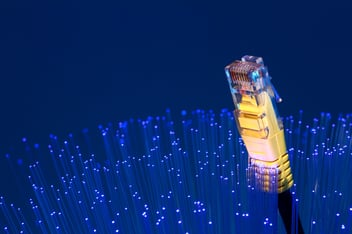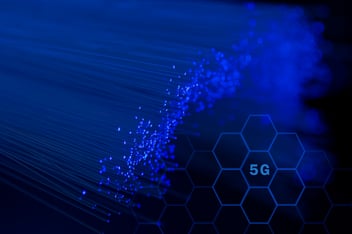Unlocking the Potential of Edge Computing: The Future of Data Processing

Cesar Jaramillo Palacio
Edge computing? Yes, edge computing. If your company needs more processing and storage power for data, you need to acquaint yourself with this approach to enhance what your organization can achieve—increased efficiency and agility in handling and managing your information.
The world is generating more data than ever before. According to Statista, the number of devices connected to the Internet is projected to reach 39 trillion by 2025. These devices generate a massive amount of data that can be used to enhance decision-making, optimize operations, and create new user experiences.
However, processing and storing this data in the cloud can be challenging. Latency can be an issue, especially for real-time applications. Additionally, for applications that generate a large amount of data, bandwidth can be costly.
Edge Computing is a new trend that has the potential to address these problems. It's a revolutionary concept that promises to change the way we handle data by bringing data processing closer to the source and eliminating the need for long-distance data transmission. This reduces latency and enables faster response times.
This opens a world of possibilities for sectors ranging from healthcare and manufacturing to transportation and retail. In this article, we will delve into the exciting world of edge computing, exploring its advantages, some of its potential applications, and how it compares to cloud computing. Keep reading and discover the potential of edge computing and the future of data processing and storage.
What is Edge Computing?
.jpeg?width=699&height=393&name=Edge%20(1).jpeg)
Edge computing, or computing at the edge, is a data processing paradigm that aims to bring this process, along with data analysis, closer to the source of generation. Unlike the traditional cloud approach, where data is sent to remote data centers for processing, edge computing is based on the idea of performing data processing on devices near where the data is generated. This reduces latency as data doesn't have to travel long distances for processing, storage, and response.
Furthermore, edge computing also helps reduce the load on telecommunications networks, as only relevant data or processing results are sent to the cloud, rather than all raw data.
Edge computing is built on a distributed infrastructure, where devices at the edge of the network, such as sensors, cameras, drones, and other IoT devices, are capable of autonomously performing data processing and analysis tasks. These devices can run machine learning algorithms, execute real-time analysis, and make quick and accurate decisions without depending on a constant connection to the cloud. This is particularly beneficial in environments where connectivity might be limited or unstable, such as remote areas, factories, moving vehicles, and IoT devices deployed in remote locations.
Thus, edge computing is based on three fundamental pillars: processing capability at the edge—processing data closer to where it's generated; connectivity—having robust enough networks to transport data efficiently and securely; and distributed intelligence—enabling devices to make decisions locally. These three elements work together to enable data processing close to its source and provide greater agility and real-time responsiveness.
Advantages of Edge Computing
Edge computing offers a range of significant advantages compared to traditional cloud-based data processing approaches. Below are some of the key advantages of edge computing:
1. Reduced Latency
By eliminating the need to send data over long distances for processing, edge computing reduces latency, resulting in faster response times. This is particularly crucial for applications where latency can have a critical impact, such as virtual reality, online gaming, autonomous driving, and telemedicine.
2. Enhanced Privacy and Security
By processing data at the edge, edge computing allows sensitive and confidential data to stay on the device or within a local network, instead of sending it to the cloud. This helps ensure greater data privacy and security, as it reduces exposure to potential security vulnerabilities and avoids transmitting sensitive data over public networks.
3. Reduced Network Load
By performing data processing at the edge, edge computing reduces the amount of data sent over the network. Only relevant data or processing results are sent to the cloud, which helps alleviate network load and reduces costs associated with transmitting large volumes of data.
These are just a few of the advantages of edge computing, and their actual impact depends on the specific application and environment in which they are implemented. However, overall, edge computing offers a more efficient and agile way of processing data, which significantly impacts various industries and applications.
Edge Computing vs. Cloud Computing
.jpeg?width=708&height=354&name=Computing%20(1).jpeg)
While edge computing and cloud computing share the goal of processing and storing data, there are some key differences between the two approaches. While cloud computing relies on centralized data centers and offers massive processing and storage capacity, edge computing focuses on bringing data processing and storage closer to the source, on devices at the network edge.
Cloud computing is ideal for tasks that require high performance and large storage capacity, such as big data analysis, training machine learning models, and intensive data processing. However, it also has limitations, such as latency, dependence on Internet connectivity, and exposure to potential security vulnerabilities.
On the other hand, edge computing is tailored for tasks that require rapid and real-time responses, as well as applications that operate in environments with limited or unstable connectivity. By bringing data processing closer to the source, edge computing helps reduce latency, improve data privacy and security, and alleviate network load.
However, with advancements in new hardware technology today, it's possible to achieve effective edge processing with more compact and efficient equipment, enabling effective data processing tasks with low latency in remote locations or on resource-constrained devices. This expands the range of applications that can benefit from edge computing.
It's important to note that edge computing and cloud computing are not mutually exclusive but can complement each other. In many applications, a combination of both approaches can be used to leverage their strengths and overcome their limitations. For instance, edge devices can perform basic processing and analysis tasks, while more complex data is sent to the cloud for long-term processing and storage.
Use Cases of Edge Computing
Edge computing has a wide range of applications across various industries and environments. Here are some notable use cases of edge computing:
1. Edge Computing in Healthcare
In the healthcare sector, edge computing can enable faster and more efficient medical care. For example, IoT devices can be used to monitor patients' vital signs in real time, perform data analysis at the edge, and send alerts or notifications to doctors in case of critical conditions.
2. Edge Computing in Manufacturing
In the manufacturing industry, edge computing can help improve the efficiency and quality of production processes. For instance, sensors on machines can collect real-time data on machine performance and status, allowing for quick and precise analysis and process optimization.
3. Edge Computing in Transportation
In the transportation sector, edge computing can play a crucial role in autonomous driving and traffic management. Autonomous vehicles can use edge computing to process real-time sensor data and make quick and accurate decisions, without relying on a constant cloud connection. Additionally, edge computing can optimize transportation routes and enhance public transportation efficiency.
These are just a few examples of edge computing use cases, and its potential is nearly limitless. As this technology continues to evolve and mature, we're likely to see new use cases and emerging applications across various industries and environments.
Edge Computing: The Present and the Future
Edge computing represents the future of data storage and processing, offering a more efficient and agile way to handle vast volumes of information. By bringing data processing closer to the source, edge computing eliminates latency and enables faster response times. Furthermore, it offers significant advantages in terms of privacy, security, and network load.
With the growth of the Internet of Things and the demand for real-time applications, edge computing is becoming an integral part of the technological infrastructure in many industries and sectors. As more companies adopt edge computing, we're likely to witness increased innovation and advancements in this field.
In summary, edge computing has the potential to transform how we process, store, and utilize data. From healthcare to manufacturing and transportation, edge computing is opening a world of possibilities and promises to drive the next wave of technological innovation. Join this revolution and discover the potential of edge computing in the future of data processing and storage.

Cesar Jaramillo Palacio
Electronics engineer, enthusiast of art, science, and technology, passionate about computer science, data, and robotics, I work as a portfolio analyst at InterNexa. I have experience in hardware development, software, and implementation of artificial intelligence and data science projects.


.jpeg)





.jpeg?width=352&name=Cliente%20(1).jpeg)

.jpeg?width=352&name=technology%20company%20(1).jpeg)



.jpeg?width=352&name=Velocidad%20de%20internet%20(1).jpeg)